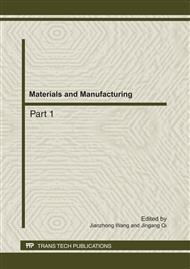p.3
p.7
p.12
p.17
p.21
p.25
p.30
p.34
Research on Drag Reduction Effect of Concave Non-Smooth Surface in Air
Abstract:
The standard k-ε turbulence model was used to simulate the flow of a new unsmooth surface - dimple concave surface in air and the drag reduction coefficients of both unsmooth surface and smooth surface with hemisphere of 0.4mm radius were presented. The result showed that this kind of unsmooth surface had a good drag reduction effect for flow velocity ranging from 4m/s to 48m /s. And it had the best reducing ability (7.2%) at a velocity of 24 m/s. The theory of the drag reduction was finally analyzed.
Info:
Periodical:
Pages:
7-11
Citation:
Online since:
July 2011
Authors:
Price:
Сopyright:
© 2011 Trans Tech Publications Ltd. All Rights Reserved
Share:
Citation:


